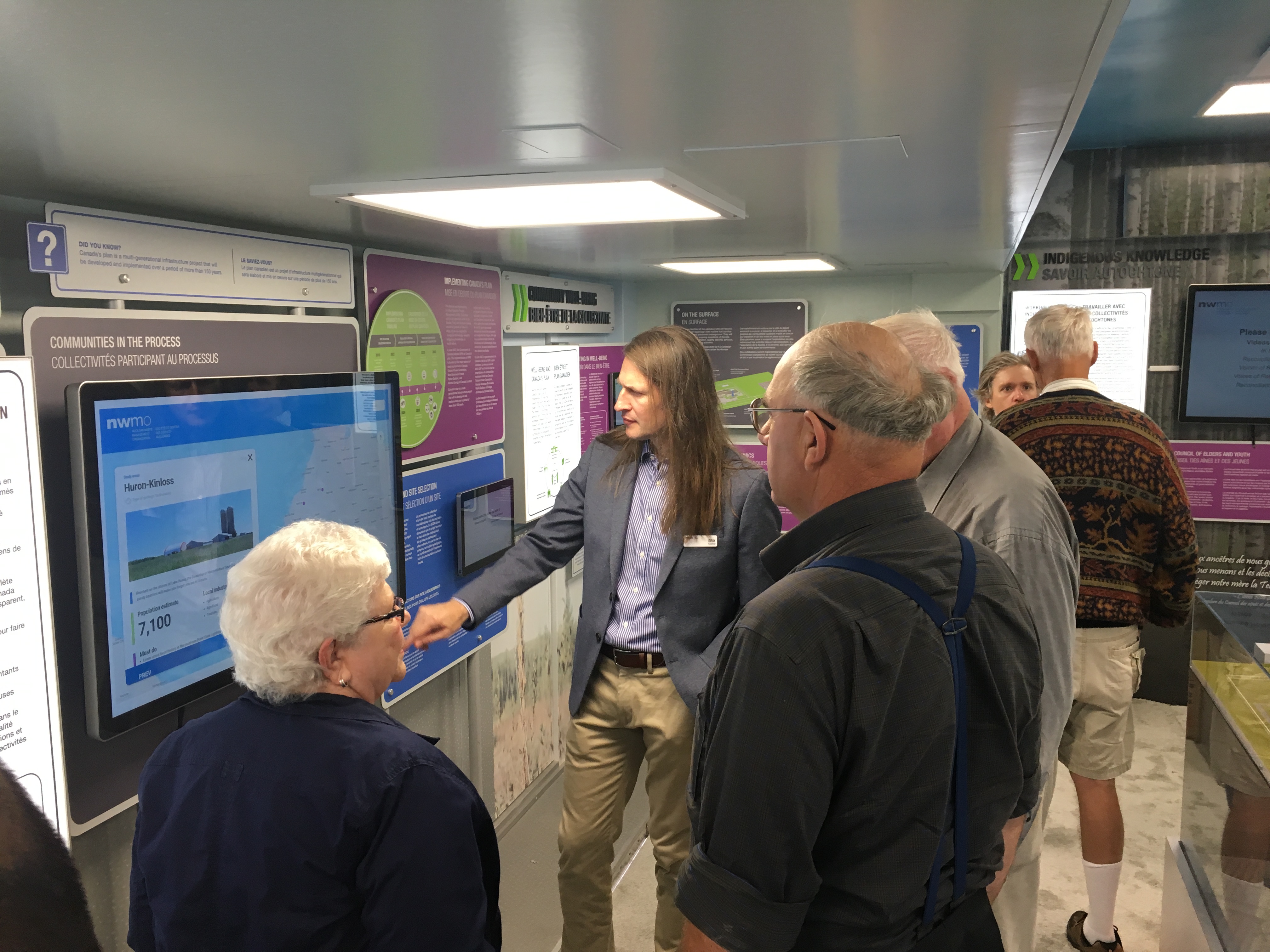Residents of Huron-Kinloss recently gathered at the Ripley-Huron Community Centre for the second Nuclear Waste Management Symposium. The event was held to discuss how a deep geological repository will safely contain and isolate used nuclear fuel in a manner that protects people and the environment for generations to come.
Over 50 people registered for the half-day symposium, which covered topics such as the local geology in Bruce County and why it has strong potential to be suitable for a deep geological repository, the findings of the seventh case study on long-term repository safety, and the safe transportation of used nuclear fuel. Members of the community commented that the symposium had knowledgeable speakers and that they appreciated the information and the clarity with which it was presented.
David Grant, Huron-Kinloss Nuclear Waste Community Advisory Committee member and co-emcee for the event, said, “Gaining a better understanding of safety, particularly as it relates to the geology in our area, is really important for those of us actively engaged in learning about the project. It was great to have members of the community attend the symposium and help further local understanding of the project.”
Allan Webster, Director of Regulatory Affairs and Environmental Assessment at the NWMO, also gave an update on the land access process launched earlier this year in South Bruce and Huron-Kinloss. “The land access process has been going well. We continue to have good conversations with community members and landowners through our local offices and collaborative engagement program with the community.”
In July, the NWMO began evaluating expressions of interest received from landowners in Huron-Kinloss and South Bruce.
“We hope to begin site investigation work in 2020 that will confirm local geology at a potential repository site to ensure long-term safety. We will continue to share information with the community as we move through the land access process,” added Mr. Webster.
Participants also had an opportunity to tour the NWMO’s new Mobile Learn More Centre, which features 3D models, interactive technology, hands-on learning opportunities, videos, and photos.
“We are excited to bring our new Mobile Learn More Centre to Huron-Kinloss,” commented Becky Smith, Regional Communications Manager at the NWMO. “We are always trying to find new ways to reach people and help build awareness about Canada’s plan.”

